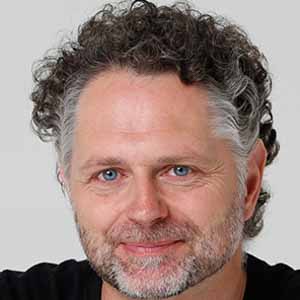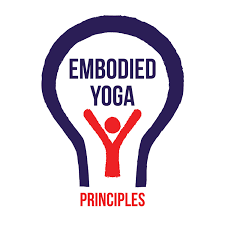
Yoga for personal insight and real world benefits

Yoga for personal insight and real world benefits

To spread the word about the Embodied Yoga Principles system we’re giving away high-quality instructional videos of some of our novel poses. These postures explore psychological and emotional themes such as saying no, finding life purpose, sexuality, leadership, generosity, parenting, our relationship to money.

They’re designed for personal growth, and to help get yoga off the mat. As well as being original, they are above all practical, and yoga teachers can use them to add a whole new dimension to their classes. Many can be combined with regular vinyasa sequences, and none are especially athletic so they’re accessible to all.


To spread the word about the Embodied Yoga Principles system we’re giving away high-quality instructional videos of some of our novel poses. These postures explore psychological and emotional themes such as saying no, finding life purpose, sexuality, leadership, generosity, parenting, and our relationship to money.
They’re designed for personal growth, and to help get yoga off the mat. As well as being original, they are above all practical, and yoga teachers can use them to add a whole new dimension to their classes. Many can be combined with regular vinyasa sequences, and none are especially athletic so they’re accessible to all.
5 new poses, free for you
Self-care, inspiration, enthusiasm, no and authority poses





Get the 6 videos here:
BONUSES
What people say about EYP

“Mark has pressed the refresh button on the yoga world to see the practice of yoga through the eyes of embodiment brings a welcome new view. The methods of embodiment link the practice on the yoga mat and brings it firmly out into the world of our relationships, work and all aspects of life…and extends our range of practices as yoga practitioners and yoga teachers.”“
Vidyadasa, hatha yoga teacher, UK

“Embodied Yoga offers a much needed fresh authentic perspective on yoga. It’s not offering an opportunity to float off into spiritual la-la and distance oneself from life’s suffering, on the contrary, it encourages the participant to become fully aware and to take responsibility for what is going on in their body and mind, becoming aware of patterns and shadows in a safe supported environment.“
Jane Dancey, yoga teacher, UK

“Embodied Yoga is a refreshing take on yoga as a method of self-enquiry and transformation. Highly effective for transforming your patterns of behaviour.“
Sindre, yoga teacher, Oslo, Norway

“I recommend EYP to anyone that would like to deepen in his/her own yoga practice, to get meaningful learnings far beyond the physical aspect of asanas and to enrich his/her own life through working with the body in a very simple, mindful but powerful way.
Also, as a Yoga teacher, EYP has helped me to bring more creativity and never-ending possibilities into my yoga classes. It has helped me to realise that yoga can be much more relational, ethical and fun. It has helped me to understand how everything we do on the mat is related to how we live off the mat, and that way we can make choices.
The teachers are outstanding communicators with a lot of experience and kind human beings. “
Pilar Corcuera Botana, yoga teacher, Canary Islands, Spain
Learn about the whole Embodied Yoga Principles system
Learn about all 26 Embodied Yoga Principles postures
Yin Postures
Inspiration pose – To explore what inspires you and fills you with awe.
Yes pose – AKA the standing open pose, the acceptance pose.
Vulnerability pose – AKA innocence pose. To explore innocence, tenderness and vulnerability, innocence, sweetness, our ‘inner child’ etc.
Care pose – AKA the hug pose, womb pose, mum/parent pose. Explore what you need to care for, or look after.
Self – care pose – AKA the compassion for oneself pose, “huggy pose”. To sense how we can create care and tenderness and look after ourselves. It can be quite powerful emotionally.
Letting go pose – To create the quality of being able to practice consciously letting go of thoughts, beliefs, or feelings which are no longer helpful.
Surrender pose – AKA humility or, child’s pose. To cultivate the quality of being able to surrender to things we can’t control.
Receiving pose – Explore how you allow yourself to receive something into your life.
Death pose – For exploring mortality, meanings, values, purpose, gratitude and existential themes.
Openness pose – To explore how we can create more openness, allowing, softening, empathy in our life.
Inner / privacy pose – To create awareness of your inner sense of self.
Evaluation pose – AKA the critic pose, knower, sage, or discernment pose. To explore discernment and judgement.
Rest pose – AKA the ease pose, easy pose, chill pose, holiday pose. Looking at how we can allow ourselves to rest, be at ease, time-out, relax in not-doing.
Yang Postures
Generosity pose – To explore what you have and would like to give, to offer.
Sensuality (aka “sex tiger” pose) – yeah baby!!!
Enthusiasm (a.k.a “f**k yeah” pose) – To explore what brings you alive with passion.
Warrior pose – Useful for exploring purpose, focus and fierceness. The classic warrior pose with some extra emphasis to create specific qualities.
Entering pose – A pose for starting and entering into things, moving forwards with confidence.
No pose – A posture to explore and develop how you say a ‘no’, or to set a boundary, for yourself or others.
Authority pose – To look at your sense of authority, status and social power.
Pushing pose – One of the most Yang poses to explore raw power, force. Can be used to see if it’s done too much in areas of life, to reveal any default patterns.
Stand pose – Explore what you care about and what you are committed to.
Support pose – For looking at your relationship to responsibility, in addition to what; or who you support in your life, and how you receive support.
Taking up space pose – Creating an expansive position to develop that quality and to be seen in doing so.
Joker pose – To explore humour, being playful and being lighthearted.
Transcendence pose – It’s about being light, rising up, and creating a transcendental quality.

See more videos and subscribe to our .
Follow our Facebook group, Youtube channel, website, and online teacher training
For any enquiries please email:
vidyadasa@embodiedyogaprinciples.com


